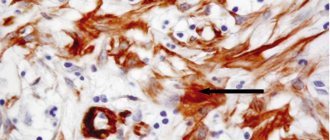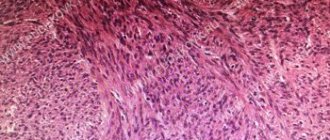The pancreas is one of the main organs of the gastrointestinal tract. It is located behind the stomach and duodenum. The gland is small - 15-20 cm in length, has an elongated shape.
The organ secretes a secretion - pancreatic juice, which contains the enzymes necessary for digestion. The pancreas contains cells that produce glucagon and insulin. These hormones enter the blood and regulate glucose metabolism in the body. Insulin affects the human body as its deficiency can cause serious diseases such as diabetes.
There are many diseases that affect the pancreas. Most often, inflammation of this organ is accompanied by permanent or periodic pain of various types. For example, this is almost the main symptom of pancreatitis.
Causes of pancreatic diseases
According to WHO, pancreatitis is considered the most common pancreatic disease. This is an aseptic inflammation of the organ, which provokes tissue breakdown. It occurs due to the accumulation of enzymes produced in the gland and their negative impact on the organ itself.
Experts identify many reasons that provoke the appearance of pancreatic diseases. The main ones:
- Poor nutrition – abuse of fatty, spicy foods and fast food.
- Failure to maintain water balance - a person should consume at least 2 liters of water daily.
- Having bad habits – drinking alcohol and smoking.
- Excessive stress and nervous overload.
Main symptoms of pancreatic diseases
There are a number of signs of pancreatic diseases. They differ depending on the type of disease and the form of its course. However, experts identify several main clinical manifestations that indicate the development of lesions in this organ.
The main symptoms of pancreatic diseases in women and men:
- The presence of unbearable acute pain in the left hypochondrium. The pain syndrome can spread to the shoulder blade, back and sternum. The duration of pain varies from several hours to several days. When the gallbladder is involved in the inflammatory process, the pain spreads to the epigastric region. Painful sensations intensify with palpation, as well as when the affected area is exposed to heat.
- Metabolic disorders are also the main symptom of pancreatic diseases. It develops due to the death of healthy organ cells. This reduces the production of digestive enzymes. Because of this, diabetes and other hormonal diseases may begin to develop in the patient’s body.
- Nausea, vomiting and acute diarrhea often accompany patients with pancreatic disorders. It all starts with bloating, frequent belching, after which flatulence appears. An increase in body temperature is also possible.
- The appearance of rashes in the chest, back and abdomen. The rash appears as a cluster of small red spots. They arise as a result of rupture of capillaries.
- Increased pain in the abdomen and hypochondrium after eating. Typically, patients change their diet to relieve pain - eat less often. As a result, weight loss occurs and the body begins to lose its protective functions. Against this background, a severe form of hypovitaminosis may develop, which can lead to deterioration of the condition of hair, nails and skin.
When the first symptoms of the disease appear, you should consult a specialist. The doctor will conduct a survey, examination and diagnosis. After which a treatment strategy will be prescribed. It is better not to delay going to the doctor. Then the disease can provoke serious complications. Timely recognition of the disease and effectively selected treatment, as well as a balanced diet, can eliminate the inflammatory process in the pancreas, normalize its functioning, and also prevent surgery - one of the radical methods of surgical treatment.
Chronic pancreatitis
Causes of chronic pancreatitis
- Cholelithiasis (cholelithiasis).
- Abuse of alcohol and fatty foods.
- Viral infections.
- Inflammatory processes of the pancreas.
- Intoxication.
- Stress.
Symptoms of chronic pancreatitis
- Pain in the epigastric region and left precostal area.
- Diarrhea, dyspepsia.
- Light-colored and greasy-looking stool.
- Loss of appetite, weight loss.
- Discomfort when eating spicy, fatty foods.
Diagnosis of chronic pancreatitis
- Biochemical examination of blood and urine.
- X-ray of the pancreas.
- Ultrasound of the pancreas, liver and biliary tract.
- Fibrogastroduodenoscopy.
Treatment of chronic pancreatitis
- Correction of the diet, fractional meals.
- Relief of pain syndrome.
- Prevention of relapse.
- Detoxification.
Pancreatitis is a disease of the pancreas: symptoms of the disease in women and men
Pancreatitis is inflammation of the pancreas tissue. The disease is characterized by a violation of the outflow of organ secretion. The damage occurs due to increased activity of enzyme systems. In this case, the secreted juices do not have time to escape into the lumen of the duodenum, but accumulate and begin to digest the gland’s own tissues.
According to WHO, the prevalence of the disease has increased several times. The main factors influencing the occurrence of pancreatitis are poor diet and abuse of alcoholic beverages.
Experts divide pancreatitis into two forms - acute and chronic. The first requires urgent hospitalization and hospital treatment under the supervision of specialists.
The main symptoms of acute pancreatitis in men and women:
- Changes in skin color – the skin becomes duller and takes on an earthy color. Brown or blue spots appear in the lumbar region and above the navel. Some patients report the appearance of obstructive jaundice.
- A feeling of acute pain in the hypochondrium - the syndrome can be encircling or localized only in the left or right side of the body.
- Impaired functioning of the digestive tract - the appearance of hiccups, belching with an unpleasant odor, nausea and continuous bouts of vomiting, diarrhea and constipation.
- General deterioration of the body - dehydration, dry mouth, severe weakness, apathy. Changes in blood pressure - increase or decrease, increased sweating, shortness of breath, increased body temperature.
Signs of chronic pancreatitis
They are less pronounced. Experts identify the following series of symptoms for this disease:
- There are changes in the color of the skin - yellowness.
- In advanced forms, sudden weight loss is observed.
- Serious illnesses and digestive disorders such as anemia, diabetes, constipation or diarrhea may occur.
- Feeling pain after eating. Most often, pain occurs after eating fatty or fried foods, as well as large amounts of alcoholic beverages. The pain is localized in the hypochondrium.
- Disorders of the gastrointestinal tract - constipation, flatulence, belching, belching with an unpleasant odor.
In the early stages, it is almost impossible to detect the disease without the intervention of a specialist, since the chronic form occurs without pronounced symptoms.
Pancreatitis of the pancreas rarely manifests itself as an independent disease. Typically, the pathological process combines several digestive organs, involving the hepatobiliary system - liver, gall bladder and ducts, duodenum, stomach. This fact requires diagnosing the entire human digestive system.
Popular questions and answers
Diseases of the pancreas are one of the most common pathologies of the digestive system in adults. In addition, there is a tendency for morbidity to increase - for example, the number of patients with acute and chronic pancreatitis has doubled in the world over the past 30 years. However, many diseases can be prevented, while others can be successfully treated at an early stage. Therefore, the issues of timely diagnosis of pancreatic diseases concern many. Our experts tell you how often you need to undergo examinations and which doctor to contact.
Where is the pancreas located?
Contrary to its name, this organ is not located under the stomach, but behind it on the back wall of the abdominal cavity, next to the kidneys. The pancreas is projected onto the anterior part of the abdominal wall in the left hypochondrium and epigastric region, therefore, during the pathological process, pain and discomfort are observed in this area. The pancreas consists of a tail, body and head and has an average size of 18 to 22 cm.
Which doctor checks the pancreas?
This is usually done by a therapist or gastroenterologist - a specialist in the diagnosis and treatment of the digestive system. Sometimes an examination by another specialist, such as a surgeon, endocrinologist or oncologist, is required. Instrumental examinations of the pancreas are performed by ultrasound diagnosticians, radiologists, and MRI diagnosticians.
How often should you have your pancreas checked?
Patients with pancreatic diseases should undergo examinations 1 or 2 times a year or more often depending on their condition. In addition to undergoing an ultrasound, they need to undergo a general and biochemical blood test with a study of serum amylase, protein and protein fractions, as well as a urine test for alpha-amylase. Healthy people over 35 years of age are recommended to have a screening examination of the pancreas at least once every 2–3 years.
Sources:
- Acute and chronic diseases of the pancreas. Educational and methodological manual for 4-5 year students of medical universities. Department of Faculty and Hospital Surgery. Krasnodar. 2020
- Introduction to ultrasound diagnosis of pancreatic diseases. https://clck.ru/aeyyn
- Recommendations of the Russian Gastroenterological Association for the diagnosis and treatment of chronic pancreatitis. year 2014.
- Outpatient diagnostics and treatment of the biliary system and pancreas. Educational and methodological manual. Belarusian State Medical University. 2005 year. https://rep.bsmu.by/bitstream/handle/BSMU/8715/Zabol_biliarn_sist.pdf?sequence=2&isAllowed=y
Treatment of pancreatitis of the pancreas
When the first symptoms of the disease appear, you should consult a specialist. The doctor will conduct a survey, examination and diagnosis. After which a treatment strategy will be prescribed. It is better not to delay going to the doctor. Then the disease can provoke serious complications. A doctor who diagnoses and treats pancreatitis is a gastroenterologist.
Acute therapy takes place in a hospital under the supervision of a doctor. And the chronic form is treated over a long period of time using various procedures.
Diffuse changes in the pancreas: symptoms and treatment
These are signs of organ pathogenesis that can only be detected using ultrasound.
Experts identify various causes of this disease. Diffuse changes can develop against the background of circulatory disorders in the pancreas, endocrine and metabolic diseases, as well as disruption of the biliary tract and liver.
For example, in elderly people and patients with diabetes mellitus, organ tissue noticeably decreases in volume. Its missing amount is replenished by adipose tissue. Such changes in the organ are not considered pathological and do not require therapy. According to the results of an ultrasound examination, the diagnosis will sound like a diffuse change in the pancreas with increased echogenicity and normal size of the organ.
Diffuse changes also occur when destroyed pancreatic tissue is uniformly replaced by connective tissue. The size of the organs may be normal or slightly smaller. This situation is observed in the presence of chronic metabolic-dystrophic disorders or acute pancreatitis. If the diagnosis of acute pancreatitis is not confirmed, then diffuse changes do not require treatment.
Symptoms of diffuse changes in the pancreas:
- With diffuse changes in the organ caused by fibrosis, there are no obvious symptoms. This picture is observed only in the early stages of the development of the disease. During fibrotic inflammation, healthy gland tissue changes to connective tissue. This reduces the production of enzymes and hormones that are responsible for metabolic processes in the body and the digestion process. The initial symptoms of the disease are similar to those of pancreatitis. The patient feels constant pain in the left hypochondrium and nausea. Due to a lack of enzymes, nausea, diarrhea, vomiting, and sudden weight loss occur. Subsequently, due to the depletion of protein reserves, allergization of the body begins and disruption of insulin production begins, which leads to diabetes mellitus.
- Diffuse changes that were caused by lipomatosis are accompanied by the replacement of organ tissue with fatty tissue. Experts consider this an irreversible process. Fat cells do not perform the functions of digestive glands. Then the body feels a deficiency of substances that are necessary for the normal functioning of the whole body. The degree of severity, that is, the symptoms of lipomatosis, completely depends on the degree of diffuse changes in the pancreas. So, if the disease has a limited spread of the pathological focus, then the process is asymptomatic. With uncontrolled progression, the parenchyma is compressed by a massive accumulation of adipose tissue, which causes pain and leads to disturbances in the functioning of the pancreas.
Role in digestion
Despite the fact that from a medical point of view this organ has a very simple structure, this does not mean that the functions it performs are also simple. Here everything is just the opposite. The role this gland plays in the digestion process is simply colossal. The main function is the production of all the necessary enzymes, thanks to which the normal digestion process occurs. Among the enzymes that this organ produces are:
- Amylase enzyme. The main role of this enzyme is to shorten very long carbohydrate chains, which must be broken down into sugar molecules, since only these can be absorbed by the human intestine. Thanks to this enzyme, when chewing a starchy product, such as potatoes or rice, you can feel a sweetish taste, although these products themselves are not sweet.
- Lipase enzyme. It has a very active effect on fats that need to be broken down into their simplest forms, such as glycerol and fatty acids. It is in this form that they are able to assimilate and undergo the digestion process. In addition, thanks to this enzyme, vitamins such as A, D, E, K, which are fat-soluble, can be absorbed in the human body.
- Nuclease enzyme. Thanks to this enzyme, the nucleic acids entering the body are broken down. It releases all free nucleic acids, and those that can be absorbed during digestion, and are also useful for building your own genetic structures
- Trypsinogen enzyme. This enzyme, as such, does not itself participate in the digestive process, but it plays a very important role in the activation of another enzyme, due to which the breakdown of all protein molecules entering the body occurs
- Prophospholipase enzymes. These are very important enzymes that work well on complex fats such as phospholipids.
As you can see, the pancreas plays almost the main role in the digestion process, since if some kind of malfunction occurs and at least one enzyme is produced in less quantity or not produced at all, this can lead to very disastrous consequences for the entire body as a whole . This will affect the absorption of nutrients, microelements, vitamins, as well as carbohydrates, proteins and fats, without which a person simply cannot live for a long time.









